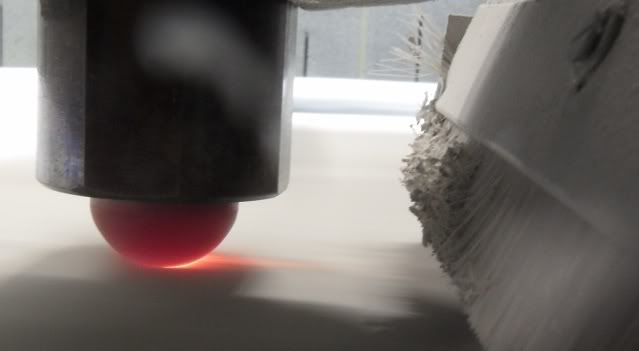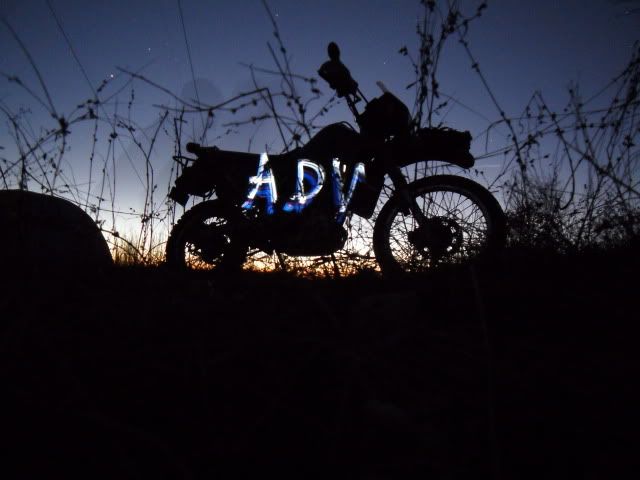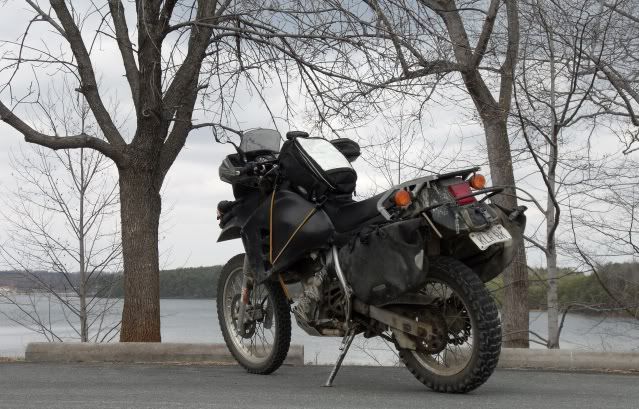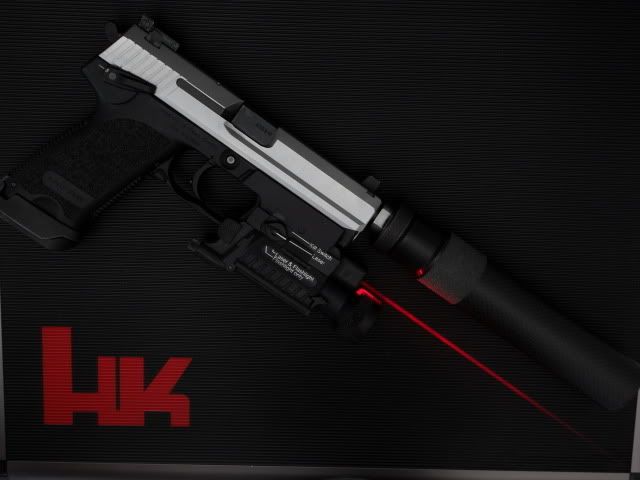Which cameras to get - for an R&D Lab - and "hi"
First post to the forum. Greetings, everyone.
I'm a mechanical engineer who dabbles in photography. I have a Samsung TL320, which was a huge upgrade from the camera I had that I bought 10 years ago for $7. I basically purchased the TL320 because it had enough "advanced" features on it to give me an idea if I wanted to take photography to the next step. I just graduated from school in December, got a job in a research and development test lab in Roanoke, VA.
My little TL320 has been used to exhaustion in the lab to document data for use by the company. We test rock drilling equipment here and the data has to be seen by people in China, India, Sweden, all over the world. The pictures I have taken with my TL320 have made the higher-ups realize that the cameras we currently have are not up to snuff, so they've tasked me with finding new cameras since I'm the "expert" in this little facility.
Problem is, I'm not anywhere close to an expert. I understand shutter speed, aperture size, ISO, manual focus, how much off camera lighting can make an image better, using the timer on the camera to guarantee the shutter press doesn't shake the camera during the exposure, etc, etc. I just read a study of Flash Exposure Compensation on this forum and thoroughly enjoyed it. The ability to set the exposure for the background and then adjust the flash to capture the subject is something that I couldn't do with my TL320.
Basically, I feel like we need a few point and shoot cameras that have decent capabilities, and then we need one "do it all" DSLR. None of the guys back here have much camera experience, so I don't want to get 4 "awesome" point and shoot cameras that these guys will never use.
Is there a "tough" camera out there? One with a lens that is nearly impossible to scratch, with controls that are sealed well enough to not allow fine granite dust to infiltrate them? I've already told my boss that odds are that a "tough" camera doesn't exist for our situation, and the only true solution is to train the people who will use them how to protect the lens and to keep the camera in an appropriately sized OtterBox or equivalent when not in use. But I figured I'd see what the real experts thought.
Waiting to be educated. And looking forward to taking my own pictures to the next level of awesome. :thumb
These are the kinds of pictures that will be taken:
Roller bearing - actual size ~1.5" tall, ~1/2" diameter.

Roller bearings after test:

Diamond insert test (with a smudge on the safety glasses that are protecting the camera lens):

Next is a picture that I took with our lab camera. It is a capable-ish enough camera to get an idea across. But we need to capture more detail than this, and more detail than the TL320 can capture.

And some of my own personal favorite images:




I'm a mechanical engineer who dabbles in photography. I have a Samsung TL320, which was a huge upgrade from the camera I had that I bought 10 years ago for $7. I basically purchased the TL320 because it had enough "advanced" features on it to give me an idea if I wanted to take photography to the next step. I just graduated from school in December, got a job in a research and development test lab in Roanoke, VA.
My little TL320 has been used to exhaustion in the lab to document data for use by the company. We test rock drilling equipment here and the data has to be seen by people in China, India, Sweden, all over the world. The pictures I have taken with my TL320 have made the higher-ups realize that the cameras we currently have are not up to snuff, so they've tasked me with finding new cameras since I'm the "expert" in this little facility.
Problem is, I'm not anywhere close to an expert. I understand shutter speed, aperture size, ISO, manual focus, how much off camera lighting can make an image better, using the timer on the camera to guarantee the shutter press doesn't shake the camera during the exposure, etc, etc. I just read a study of Flash Exposure Compensation on this forum and thoroughly enjoyed it. The ability to set the exposure for the background and then adjust the flash to capture the subject is something that I couldn't do with my TL320.
Basically, I feel like we need a few point and shoot cameras that have decent capabilities, and then we need one "do it all" DSLR. None of the guys back here have much camera experience, so I don't want to get 4 "awesome" point and shoot cameras that these guys will never use.
Is there a "tough" camera out there? One with a lens that is nearly impossible to scratch, with controls that are sealed well enough to not allow fine granite dust to infiltrate them? I've already told my boss that odds are that a "tough" camera doesn't exist for our situation, and the only true solution is to train the people who will use them how to protect the lens and to keep the camera in an appropriately sized OtterBox or equivalent when not in use. But I figured I'd see what the real experts thought.
Waiting to be educated. And looking forward to taking my own pictures to the next level of awesome. :thumb
These are the kinds of pictures that will be taken:
Roller bearing - actual size ~1.5" tall, ~1/2" diameter.

Roller bearings after test:

Diamond insert test (with a smudge on the safety glasses that are protecting the camera lens):

Next is a picture that I took with our lab camera. It is a capable-ish enough camera to get an idea across. But we need to capture more detail than this, and more detail than the TL320 can capture.

And some of my own personal favorite images:




0
Comments
I am concerned about how much more detail you are expecting and how much time you have to devote to the process. Lighting is a very important part of photography and this is basically a form of "product photography". Unfortunately product photography is neither quick nor easy to achieve the best results.
You can create a "shooting booth" which would probably give you pretty consistent and desirable results within the limits of the booth's practical dimensions, but moving the lights would definitely be needed and the function of lighting would need to be understood.
What I suggest is hiring someone local, a professional photographer, who can give you some insight into the process of product photography. From that experience interpret and interpolate into your own needs.
Since lighting is important, before you purchase a camera you need to explore how it would use and, perhaps, control, the lighting. Flash powered lights are arguably the most color accurate form of photographic light, but they may be difficult for the average user to understand the outcome of the lights. Compact fluorescent lights are not necessarily color accurate but they do provide a valuable preview of the effects of lighting direction and intensity. Compact fluorescent lights are also pretty cheap and may be the easiest to sell to management.
Moderator of the Cameras and Accessories forums
I was absolutely considering setting up a "white box" to use for images. One of the problems I would run in to is that I have NO idea what size the box would have to be. We have drills in here that drill a 90" hole. We have bearings the size of a jelly bean. I need to be able to take pictures to show stress cracks in those or to show the functionality of a piece of equipment.
In my report to the bosses, that was definitely going to be included in there. Something to the effect of:
"We could buy a $5000 camera tomorrow and it wouldn't matter because the lighting in this facility is still terrible."
I say that just because I want you guys to know that I understand that an awesome camera alone doesn't mean amazing quality pictures, and that an amazing camera won't turn a beginner into a pro.
A better idea of what I need could be seen by looking at the first image above of the roller bearing, that would be the kind of material failure we would need to document and send all over the globe. But we need much better quality than my camera can do, I think. And of course, the lighting in that picture is absolutely terrible. You should have seen the things I used to get it to look THAT good.
I don't know what makes a camera have incredible detail for close up shots. Is it a combination of the lens coupled with the megapixel capability of the sensor? If I wanted something that is half a centimeter long to show up with good detail on the average computer screen, what's the limiting factor there as far as camera equipment? Am I looking for a high Megapixel value with the capability to have a macro lens? Manual focus is a must, I would assume. Maybe optical zoom is important so lighting isn't influenced by the camera body. These are the kinds of things I wanted to know so I could find the camera that will suit our needs.
And once I find that camera, we'll probably have to get lighting equipment to supplement it.
A huge part of my question was also whether or not there was an industry leading "tough" camera out there. I baby my electronics, but we've got the military grade, bomb proof laptops back here because... this is rock drilling. Some of the people who will use these cameras won't completely understand how sensitive they are. If we get a "flagship" DSLR type camera, I'll probably keep it under lock and key.
Edited to add: you don't have to waste your breath explaining something. If you send me a link that helped YOU understand what I'm talking about, I'll read it. A search didn't turn up what I was looking for.
As far as lighting goes, the Olympus flash system is pretty good with its remote TTL metering (uses the pop-up flash to send a signal). Metz flashes are also a good, low-cost alternative with similar features.
http://silversx80.smugmug.com/
Olympus E-M5, 12-50mm, 45mm f/1.8
Some legacy OM lenses and an OM-10
Well, basically I think we need something between a microscope image and a typical macro image like I've shown earlier in the thread. And I was hoping to be educated by the experts about what kind of set-up would be required to take some amazing close ups. Y'know, the kind that show the detail of a gnat's eye? I don't know what features a camera has to have (and ultimately the photographer has to know how to be able to use) in order to achieve such a high level of quality on close-up photos.
The engineers who see these images in Sweden don't necessarily care that I broke some test bearings, because that is my job. (
This place is great. I find new things every day.
Now I have to figure out how to use them, because nobody here does.
For now, we might just get 4 point and shoot cameras and I'll teach the guys how to use them. But if I can show that a DSLR or higher price camera can take absolutely incredible shots, it would be entirely possible that we get one of those as well.
Thanks in advance for the assistance, guys and gals. It is very appreciated.
http://dgrin.com/forumdisplay.php?f=23
http://dgrin.com/showthread.php?t=143373
For the material sizes you have indicated I suggest that in addition to a dSLR you need:
A 1:1 macro lens for the "bearings the size of a jelly bean" and for somewhat larger subjects too.
Lots of choices. Again emphasizing a Canon host camera:
http://www.photozone.de/canon-eos/167-canon-ef-100mm-f28-usm-macro-test-report--review
Sigma AF 105mm f/2.8 EX macro DG
http://www.photozone.de/canon-eos/301-sigma-af-105mm-f28-ex-macro-dg-lab-test-report--review
Tokina AF 100mm f/2.8 AT-X Pro D macro
http://www.photozone.de/canon-eos/270-tokina-af-100mm-f28-at-x-pro-d-macro-canon-review--test-report
Tamron AF 90mm f/2.8 Di SP macro
http://www.photozone.de/canon-eos/282-tamron-af-90mm-f28-di-sp-macro-test-report--review
I have the Tamron 90mm Macro and it is a very nice, and reasonably priced, true macro lens.
A special purpose "micro" photography lens for those times when a microscope and camera attachment won't work, like the Canon MP-E 65mm Macro, f2.8. Alternately you can DIY:
http://www.dgrin.com/showthread.php?t=69392
Add the appropriate lighting and I highly recommend a product table for shooting if you have a reasonably fixed studio space.
For the dusty environments you can either use the camera inside a protective bag or sleeve, or you can house the camera inside an underwater housing for more complete protection, at considerable added expense and with much less convenience.
For P&S cameras consider the waterproof camera reviews:
http://www.dpreview.com/reviews/Q209waterproofgroup/
I do believe that most waterproof cameras sacrifice some image quality and many service conveniences, but they should last a bit better. Otherwise, a waterproof bag is a pretty good universal protection. I bought my son a DiCAPac to use with his P&S in Iraq:
http://www.amazon.com/s/ref=nb_sb_noss?url=search-alias%3Delectronics&field-keywords=DicaPac&x=16&y=23
Moderator of the Cameras and Accessories forums
http://www.adorama.com/NKR1.html?utm_term=Other&utm_medium=Shopping%20Site&utm_campaign=Other&utm_source=gbase
on a Nikon with a versatile macro lens. Works for small as well as larger items. good stuff!
the 105 macro lens on something like the D7000 would be pretty kick ass.